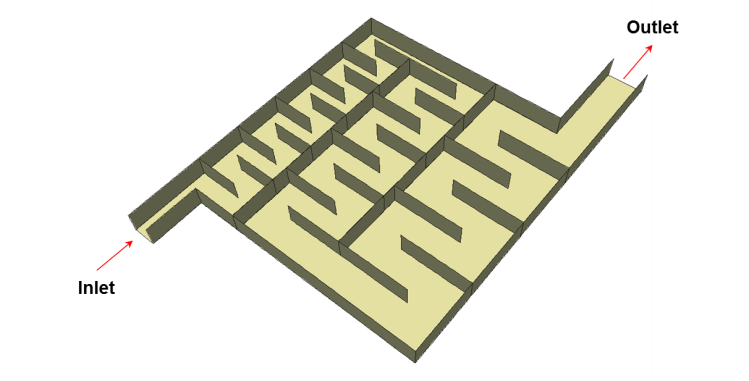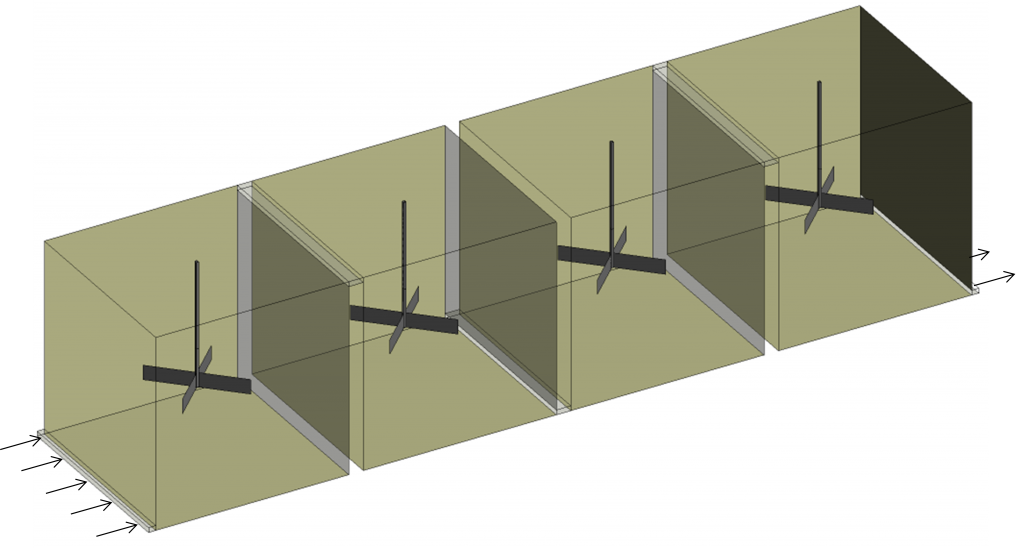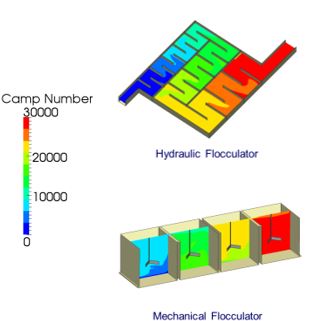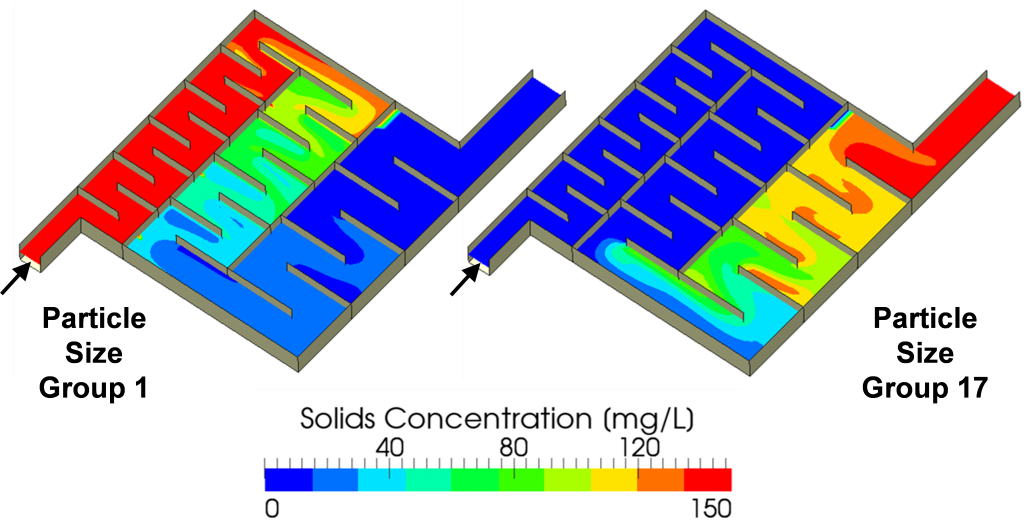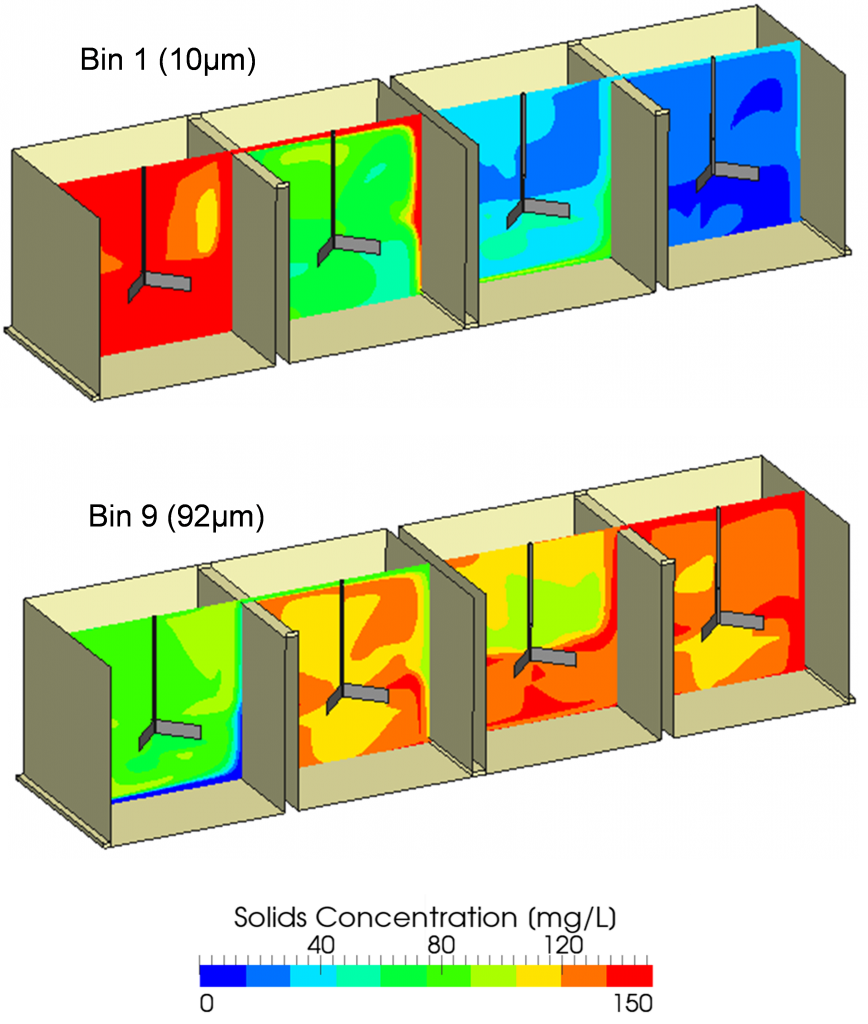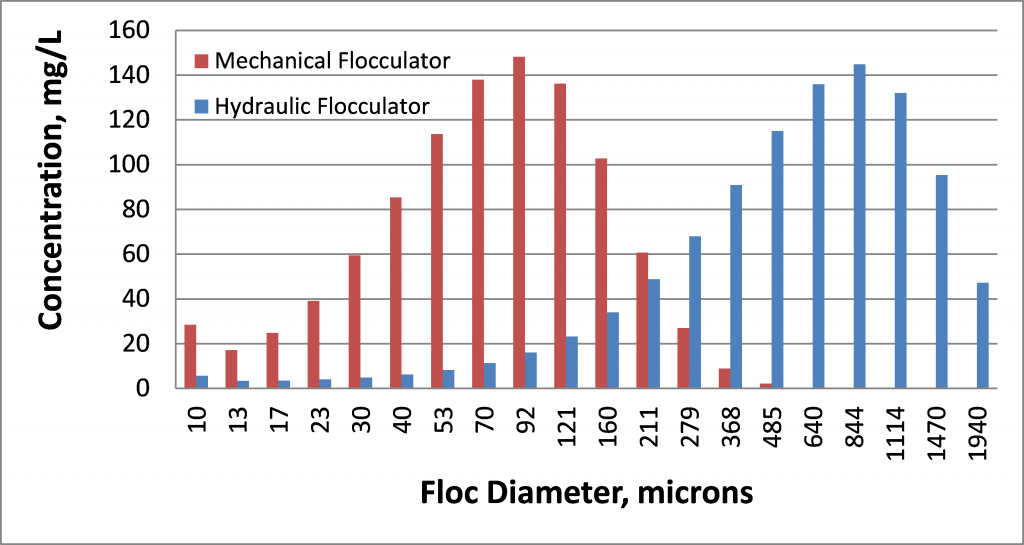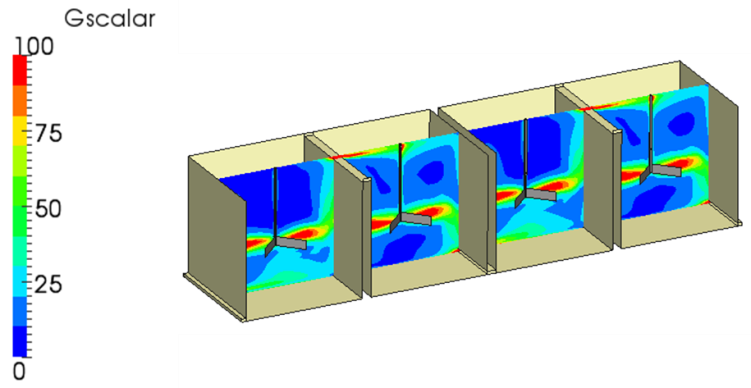Optimising Flocculation to Remove Impurities from Potable Water
Flocculation processes are widely used in the treatment of water. The flocculation of particles into larger aggregates, ‘flocs’, allow impurities to be removed more easily by filtration or sedimentation. Chemical coagulants can be introduced in order to destabilize the particles and improve the efficiency of flocculation.
Hydraulic or mechanical flocculators may be used to enhance mixing and cause particles to collide with one another. A hydraulic flocculator, as depicted in Figure 1, uses a series of baffles to generate mixing. The size of the channel starts off small in order to generate higher turbulence, which promotes flocculation; the size gradually increases along the length of the channel in order to reduce turbulence and therefore limit floc breakup. The disadvantage is that a site may not have sufficient head and may alternatively opt for a mechanical flocculator, as depicted in Figure 2, which shows a series of tanks stirred by mixers.
Figure 1: Hydraulic Flocculator
Figure 2: Mechanical Flocculator
The turbulence generated by the baffles or mixers in turn generates mixing and particle collisions that may result in the particles combining together to form a larger floc. However, as agitation and mixing increase, floc breakage can also occur.
Population Balance Model
The purpose of a population balance is to model changes in particle size distribution due to flocculation and breakup processes, whilst conserving the overall mass.
Flocculators
After destabilization of the particles via the addition of a coagulant and rapid mixing, flocculators may be used to provide gentle mixing. The frequency of collisions between particles is dependent upon velocity gradients in the flow.
Flocculators are typically designed to give the optimum value of the Camp number, which is the product of the average velocity gradient, G, and the detention time, t. Typical values for the Camp number are between 30,000 and 100,000.
Figure 3 presents an example of contours of Camp number for both systems, showing that, theoretically, similar degrees of flocculation would be expected due to similar magnitudes of Camp Number at the outlet.
Figure 3: Contours of Camp No
Flocculation Modelling
Using CFD, the transport of multiple size groups of particulates can be solved in addition to solving the velocity gradients, which are required in order to implement certain types of flocculation models. The process of flocculation is presented in Figure 4 for the hypothetical hydraulic flocculator in which 20 particle size groups are resolved. At the inlet, only the smallest particle (group 1) is introduced to the flow. The results in Figure 4 show that the concentration of the smallest particle (left) gradually decreases due to flocculation taking place and the concentration of particle group 17 increases as the residence time of the fluid through the flocculator increases. A similar plot is presented in Figure 5 for the mechanical flocculator.
Figure 4: Concentration of Particle Size Groups 1 and 17 Showing the Effect of Flocculation
Figure 5: Concentration of Particle Size Groups 1 and 9 Showing the Effect of Flocculation
Figure 6 presents the particle size distribution at the outlet of each system. Although each has a similar Camp number, it was found that the high shear around the mixers generates breakup of particulates, therefore placing a constraint on the degree of flocculation that can be achieved.
Figure 6: Resulting Particle Size Distribution due to Flocculation and Breakup Processes
Figure 6: Resulting Particle Size Distribution due to Flocculation and Breakup Processes
Figure 7 presents contours of the G scalar, which is indicative of the degree of shear in the flow. This shows high shear around the mixers.
Figure 7: ‘G’ Scalar in the Mechanical Flocculator
Conclusions
Flocculation is an important process in the removal of impurities from potable water.
CFD models that incorporate population balances can be used to model the effect of particle flocculation and breakup in order to more accurately represent the size distribution of the particles in the water. This provides scope for optimization of the flocculator in order to reduce the quantity of chemicals required or to achieve greater treatment flow.
For more information surrounding our CFD capabilities in the Water Industry, please contact us on 0117 960 2212 (Bristol) or email us.
